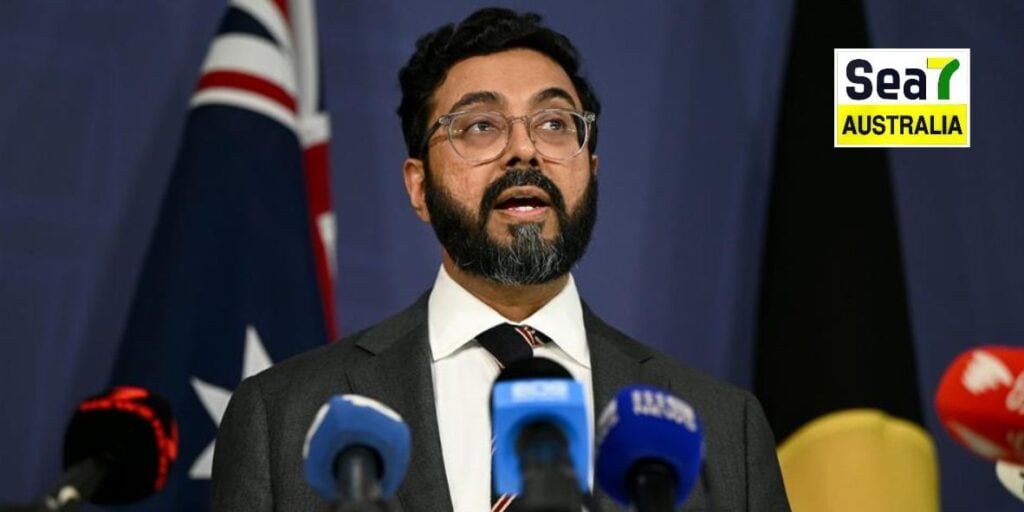Sea7 Australia Editorial Desk (Tarandeep Bilaspur): What does the controversial 31 August protest reveal about Australia’s relationship with immigration and multiculturalism?
Australia has always been a nation shaped by waves of migration—from the First Nations peoples who called this land home for over 65,000 years, to the European settlers, and the diverse communities that followed. Yet on 31 August 2025, the country finds itself grappling with a familiar yet troubling question: who truly belongs in Australia?
The 31 August Protest Australia: What’s Really Happening?
The 31 August protest Australia events, officially called the “March for Australia,” are scheduled to take place across the nation. Organizers present these gatherings as peaceful, grassroots demonstrations aimed at addressing concerns about immigration policy. However, beneath the surface lies a more complex and concerning reality.
These protests center around calls to end what organizers term “mass migration” and to reclaim what they see as Australia’s “pure national identity.” The messaging has raised alarm bells among government officials, community leaders, and everyday Australians who recognize the dangerous undertones of division and exclusion.
A Nation Built by Migration Confronts Its Own History
There’s a profound irony in Australia hosting anti-migration protests. Every non-Indigenous Australian family has a migration story—whether their ancestors arrived on the First Fleet in 1788, during the Gold Rush, or last week on a skilled worker visa. The difference isn’t whether people migrated to Australia, but when they arrived and under what circumstances.
The displacement of First Nations peoples remains Australia’s most painful historical truth. Today’s anti-immigration rhetoric conveniently ignores this reality while simultaneously condemning more recent arrivals for doing exactly what earlier generations did: seeking a better life in Australia.
Political Tensions Fuel the 31 August Protest Australia Movement
The timing of these protests isn’t coincidental. Australia’s current political climate has created fertile ground for anti-immigration sentiment:
- Policy Changes: The government has reduced the permanent migration ceiling to 185,000 places for 2024-25
- Increased Costs: Student visa fees have risen significantly
- Stricter Requirements: New rules have frustrated universities, businesses, and migrant families
- Economic Pressures: Cost of living concerns have made some Australians more receptive to scapegoating
Political Figures Add Fuel to the Fire
Independent MP Bob Katter has emerged as one of the most vocal supporters of the 31 August protest Australia movement. His recent confrontational behavior with journalists questioning his own Lebanese heritage highlights the contradictions within anti-immigration politics. Katter’s family migrated over a century ago, yet he speaks of Australians’ “rage of fury” over current migration—seemingly forgetting that his own presence in Australia stems from the same process he now condemns.
This political opportunism has emboldened protest organizers, some of whom have documented connections to far-right groups that recently staged neo-Nazi demonstrations in Melbourne.
The Reality Behind Migration Myths
While protest organizers paint migration as Australia’s great threat, the evidence tells a dramatically different story:
Economic Contributions
- Migrants fill critical skill shortages in healthcare, construction, engineering, and agriculture
- They contribute billions in tax revenue annually
- Studies consistently show migrants contribute more to public coffers than they consume in services
- Regional towns across Australia have been revitalized by migrant communities
Cultural Enrichment
- Post-war Italian and Greek communities helped build Australia’s infrastructure and small business sector
- Vietnamese refugees transformed suburbs into thriving cultural and economic hubs
- Recent arrivals from India and China are driving innovation in technology, education, and international trade
Demographic Necessity
Without continued migration, Australia would face:
- An aging population with insufficient workers
- Critical staff shortages in hospitals and essential services
- Declining university revenues and international competitiveness
- Economic stagnation in key growth sectors
Government Response to the 31 August Protest Australia Events
Federal ministers have taken a strong stance against the upcoming protests:
Multiculturalism Minister Anne Aly described such activism as having “no place in modern Australia,” emphasizing the government’s commitment to maintaining social cohesion.
Home Affairs Minister Tony Burke warned against “those who seek to divide and undermine” Australian society, highlighting the potential dangers of extremist infiltration of seemingly legitimate protests.
These official responses reflect broader concerns about the 31 August protest Australia movement’s potential to damage community relations and embolden extremist elements.
What the 31 August Protest Australia Reveals About Modern Australian Society
The planned protests expose deeper tensions within contemporary Australia:
Fear vs. Opportunity
While organizers frame their message around protecting Australian identity, they’re actually promoting a vision of Australia built on fear and exclusion rather than the inclusive, opportunity-focused society that has driven the nation’s success.
Historical Amnesia
The anti-migration rhetoric requires ignoring Australia’s entire history of successful integration and the ongoing contributions of diverse communities.
Political Exploitation
The protests demonstrate how economic anxiety and social change can be weaponized by opportunistic politicians and extremist groups.
Moving Forward: Learning from the 31 August Protest Australia Moment
As Australia processes the 31 August protest Australia events and their aftermath, several lessons emerge:
- Education Matters: Many Australians lack understanding of migration’s positive impacts, creating space for misinformation to flourish.
- Leadership Counts: Political figures have a responsibility to promote unity rather than division, especially during times of economic stress.
- Community Voices: The quiet majority of Australians who support multiculturalism need platforms to counter extremist messaging.
- Policy Communication: Government policies affecting migration must be clearly explained to prevent misunderstanding and exploitation.
The True Test of Australian Values
The 31 August protest Australia controversy ultimately poses a fundamental question: What kind of country does Australia want to be?
Australia’s strength has never come from ethnic purity or cultural uniformity. Instead, it has emerged from the nation’s ability to welcome newcomers while respecting First Nations heritage, to adapt and grow through diversity, and to build a society where everyone can contribute their talents and energy.
The protesters claim to represent “Australia First,” but their vision would actually put Australia last—isolated, divided, and diminished. True patriotism means recognizing that Australia’s greatest asset isn’t its location or natural resources, but its people—all of them, regardless of when they or their families arrived.
Conclusion: Beyond the 31 August Protest Australia
As the dust settles from the 31 August protest Australia events, the nation faces a choice. It can allow voices of fear and division to shape its future, or it can recommit to the inclusive values that have made it one of the world’s most successful multicultural societies.
The real march for Australia isn’t about excluding people or returning to an imagined past. It’s about moving forward together, building on the contributions of every community, and ensuring that Australia remains a place where anyone willing to contribute can find a home.
The 31 August protest Australia moment will be remembered not for what it achieved, but for how it reminded the nation of what it stands to lose if fear triumphs over hope, division over unity, and exclusion over the inclusive spirit that has always been Australia’s greatest strength.







